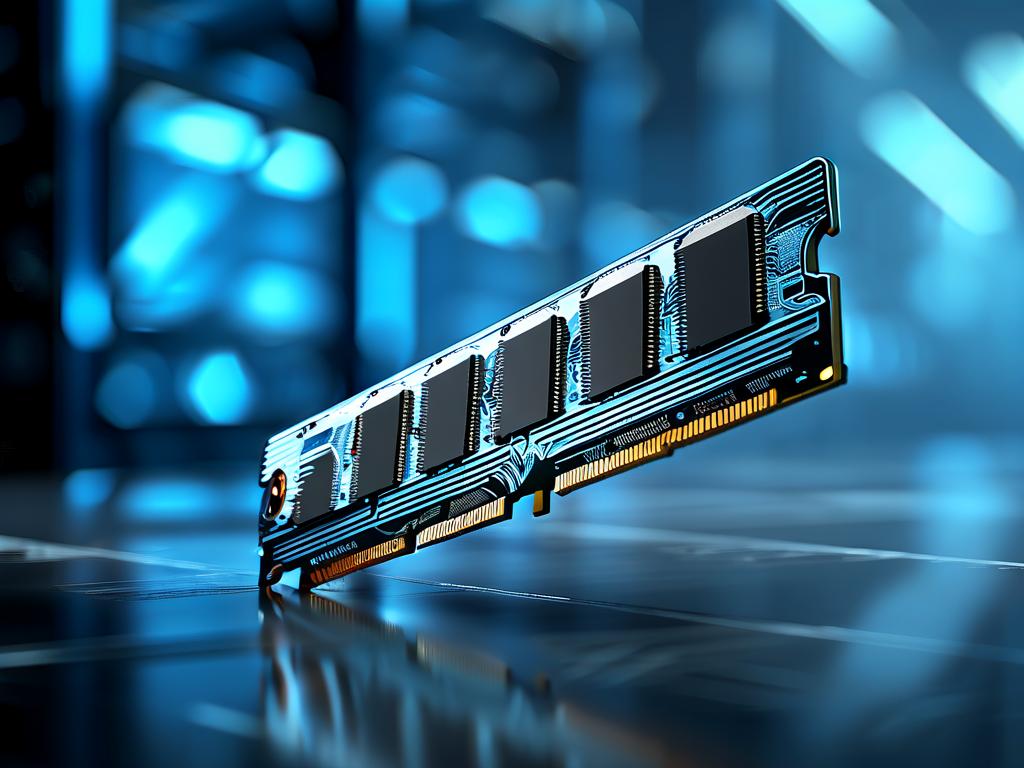In the realm of high-performance computing, selecting the right memory modules is critical for handling data-heavy workloads efficiently. Applications like machine learning, 3D rendering, scientific simulations, and large-scale database management demand RAM that can sustain rapid data throughput while minimizing latency. This article explores memory modules specifically engineered to tackle compute-intensive tasks, highlighting their technical specifications and use cases.

One standout option is the Samsung DDR5-6400 64GB LRDIMM. Designed for servers and workstations, this module leverages DDR5 technology to achieve bandwidths up to 51.2 GB/s. Its large capacity and error-correcting code (ECC) support make it ideal for enterprise environments running virtualization or AI training models. The LRDIMM architecture reduces electrical load on the memory controller, enabling higher density configurations without compromising stability—a necessity for multi-GPU setups in deep learning.
For overclocking enthusiasts, the G.Skill Trident Z5 RGB DDR5-8000 32GB Kit pushes boundaries with speeds reaching 8,000 MT/s. Its optimized heat spreader and voltage regulation modules (VRMs) ensure thermal reliability during prolonged workloads like 4K video editing or real-time physics simulations. While primarily marketed to gamers, its low CAS latency (CL36) benefits compute tasks requiring rapid access to temporary datasets.
Another contender is Micron’s Crucial DDR5-5600 48GB Non-Binary Module. This unconventional 48GB size bridges the gap between 32GB and 64GB configurations, offering flexibility for mixed workloads. Engineers using CAD software or finite element analysis tools appreciate its ability to handle irregular memory demands without forcing a full upgrade to higher-capacity DIMMs.
Enterprise-grade solutions like the SK Hynix HMABAG8MMR4N-DIY 128GB DDR4-3200 cater to legacy systems still reliant on DDR4. Despite slower speeds compared to DDR5, its massive capacity suits in-memory databases (e.g., SAP HANA) where storing terabytes of active data is prioritized over raw speed. The module’s 2Rx4 design enhances signal integrity, critical for financial institutions processing real-time transactions.
When evaluating these modules, consider factors beyond raw specs. For instance, Kingston Fury Renegade DDR5-6000 64GB incorporates on-die ECC and proprietary firmware to auto-optimize timings based on workload patterns—a boon for researchers managing unpredictable computational phases. Similarly, Corsair Dominator Platinum DDR5-6600 48GB uses Corsair Link integration to sync with cooling systems, maintaining performance during extended rendering sessions.
Emerging technologies also play a role. NVIDIA’s Grace Hopper Superchip, while not a traditional RAM module, combines HBM3e memory with LPDDR5X to deliver 1.2TB/s bandwidth—a paradigm shift for GPU-accelerated supercomputing. This hybrid approach hints at future trends where memory hierarchies blur between CPU and GPU domains.
In , compute-heavy applications require balancing speed, capacity, and reliability. Whether optimizing a render farm or deploying neural networks, matching memory modules to specific workload profiles ensures seamless operation. As DDR5 adoption grows and HBM becomes mainstream, expect even finer-tuned solutions for extreme computing demands.

